For some reason, the barn swallows at the marine lab like building their nests above doors. It seems that little 1/2-inch ledge of the door frame provides support for the mud nest. And the birds don’t always choose little-used doors, either. This year a pair constructed their nest above one side of a double-door that people walk through all day. The mother laid and incubated her eggs, but would occasionally get flushed off the nest if someone came through the door. I always tried not to disturb her any more than necessary. The animal is always right, so I figured she knew what she was doing.
The eggs hatched about a week ago, I think. The mom would sometimes leave the nest when people approached, and even though I couldn’t see anything in the nest I’d hear little cheeps. Earlier this week I thought I could see little heads poking above the edge of the nest.
It seems there are three baby birds in this nest!
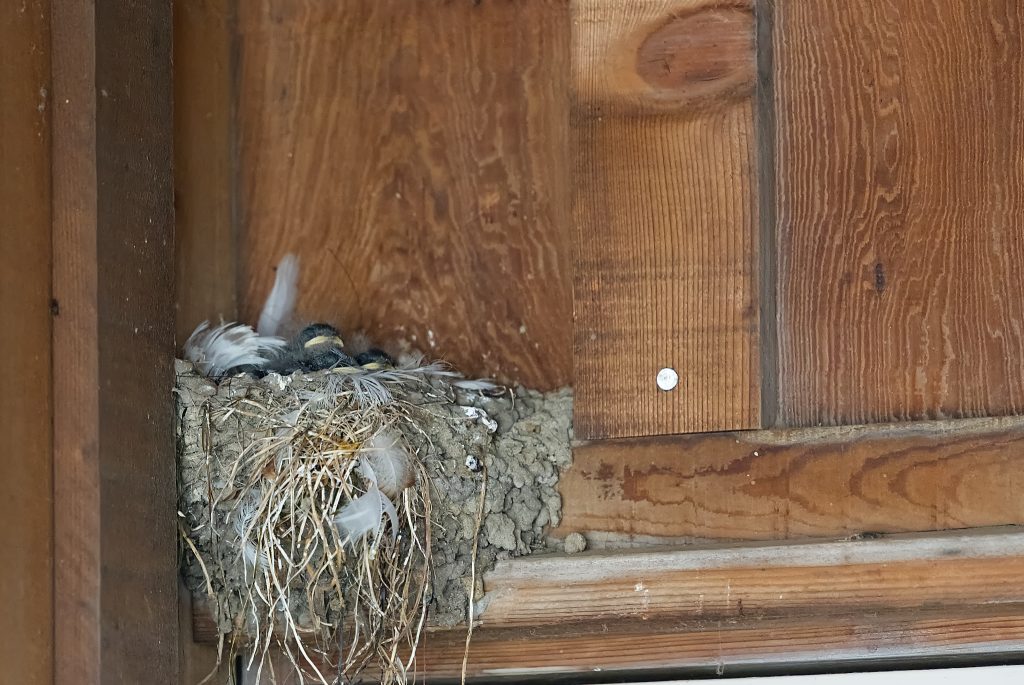
2020-06-27
© Allison J. Gong
I haven’t spent much time watching the nest closely, because I don’t want to scare the mother off and keep her away. Today I was lucky and stuck around just long enough, and with the big camera at hand, to capture both parents returning to feed the babies. The first parent arrived with an insect and landed on the nest. The other parent alit on the door frame.
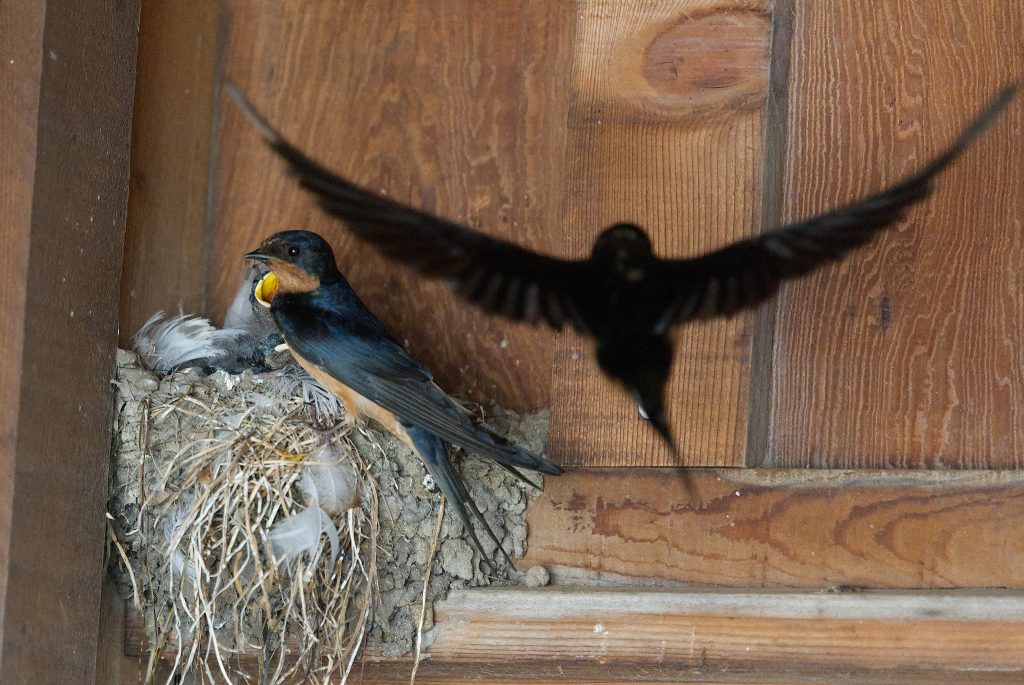
2020-06-27
© Allison J. Gong
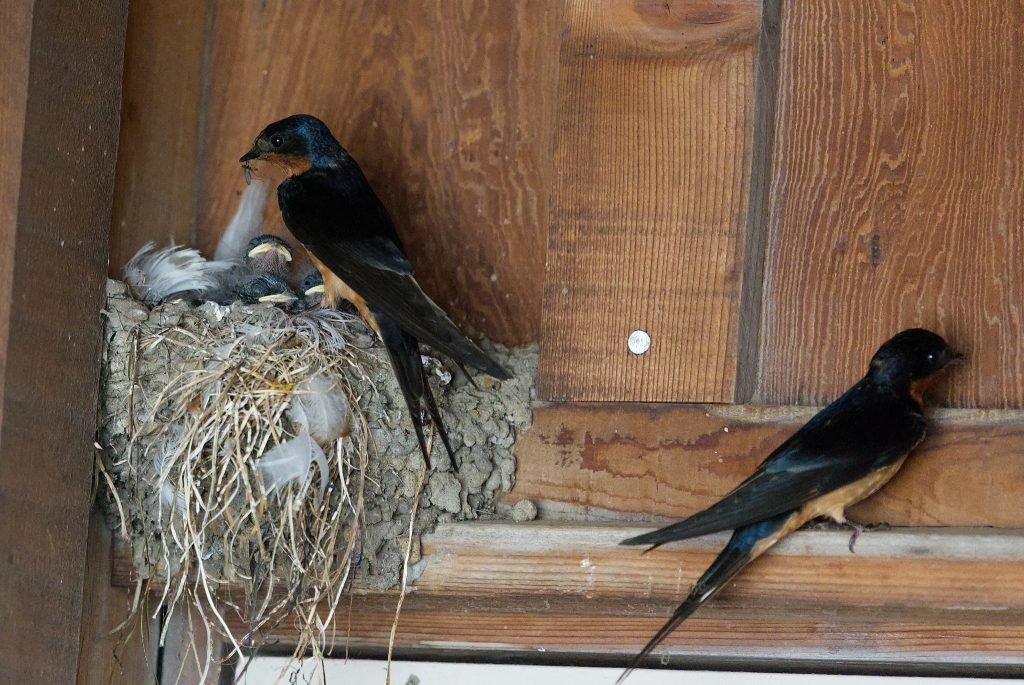
2020-06-27
© Allison J. Gong

2020-06-27
© Allison J. Gong

2020-06-27
© Allison J. Gong
After depositing the insect into one of the gaping yellow mouths, the first parent flies off. The second parent doesn’t seem to have anything to offer the babies, though.
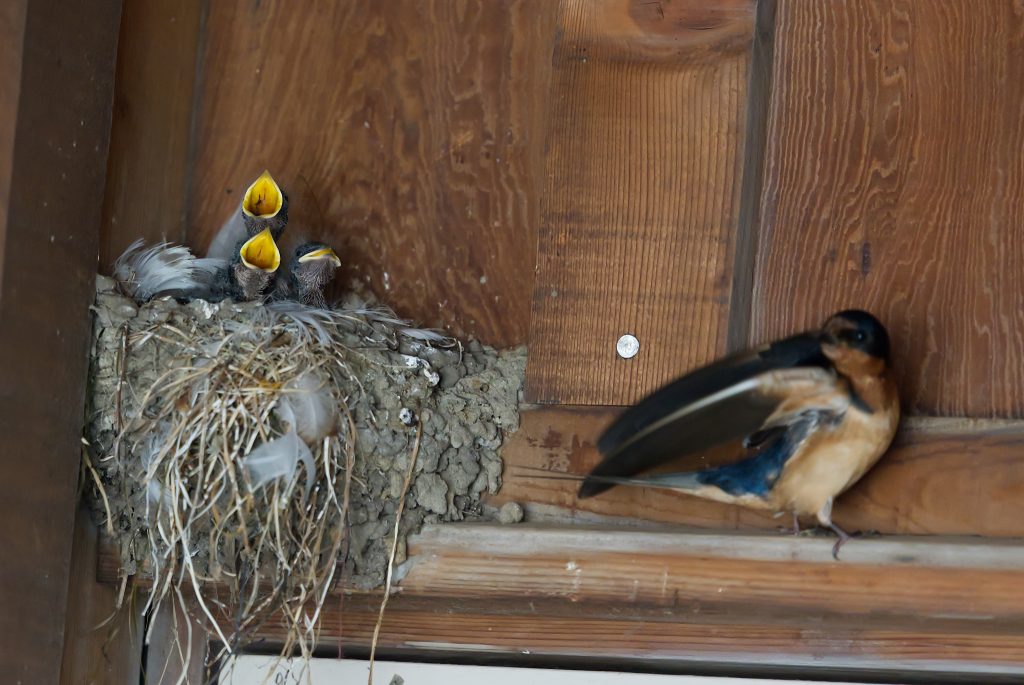
2020-06-27
© Allison J. Gong
Ooh, maybe this parent has food!
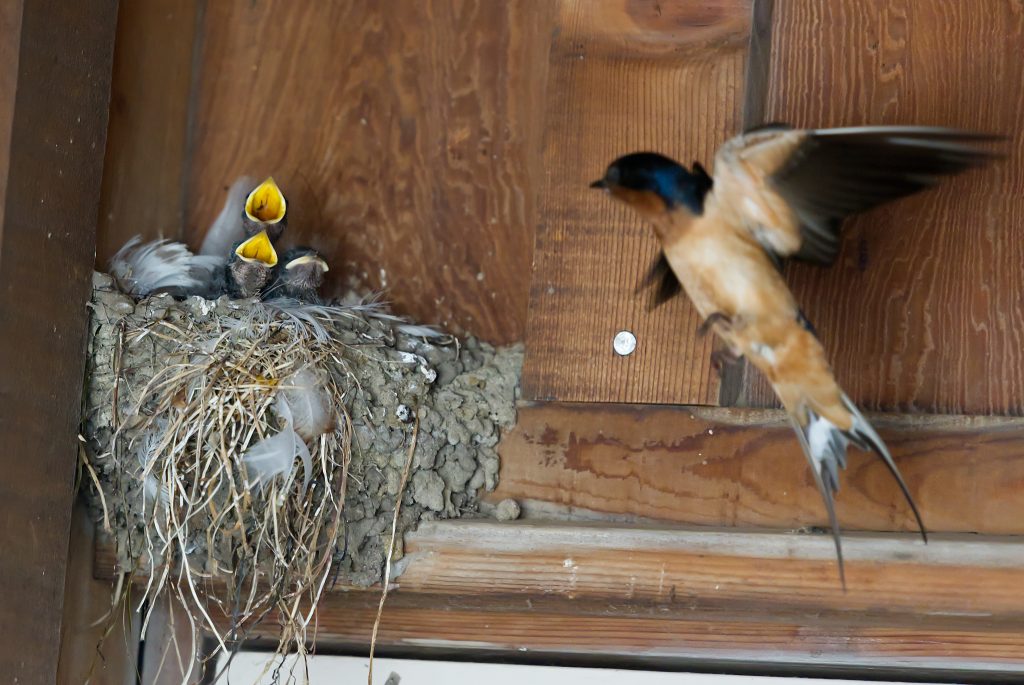
2020-06-27
© Allison J. Gong
The second parent lands on the nest. . .
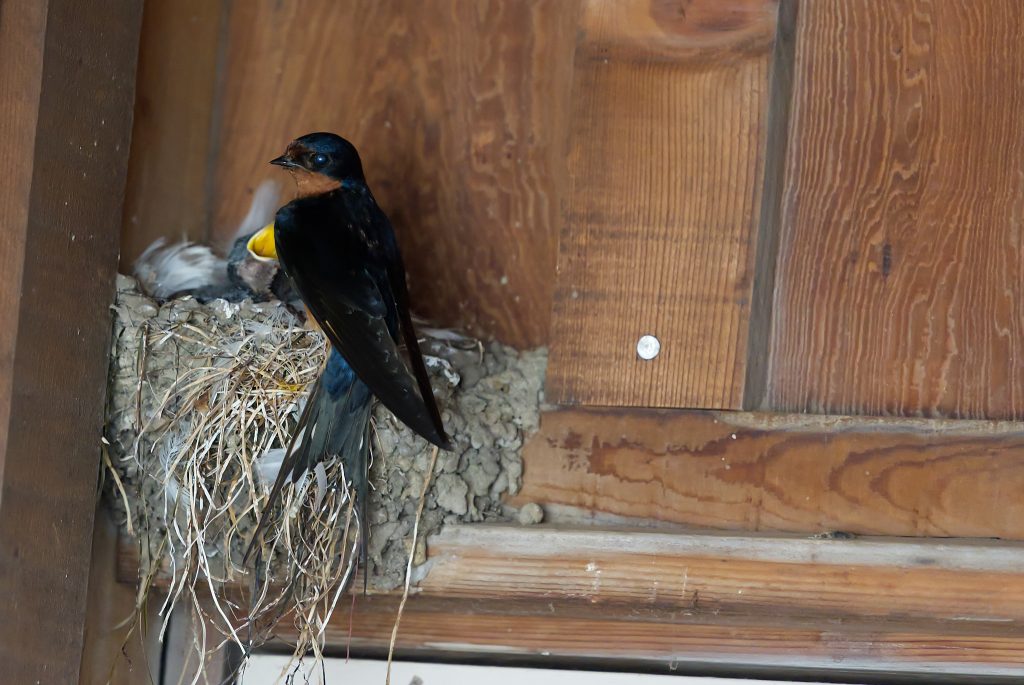
2020-06-27
© Allison J. Gong
. . . and promptly takes off again. . .
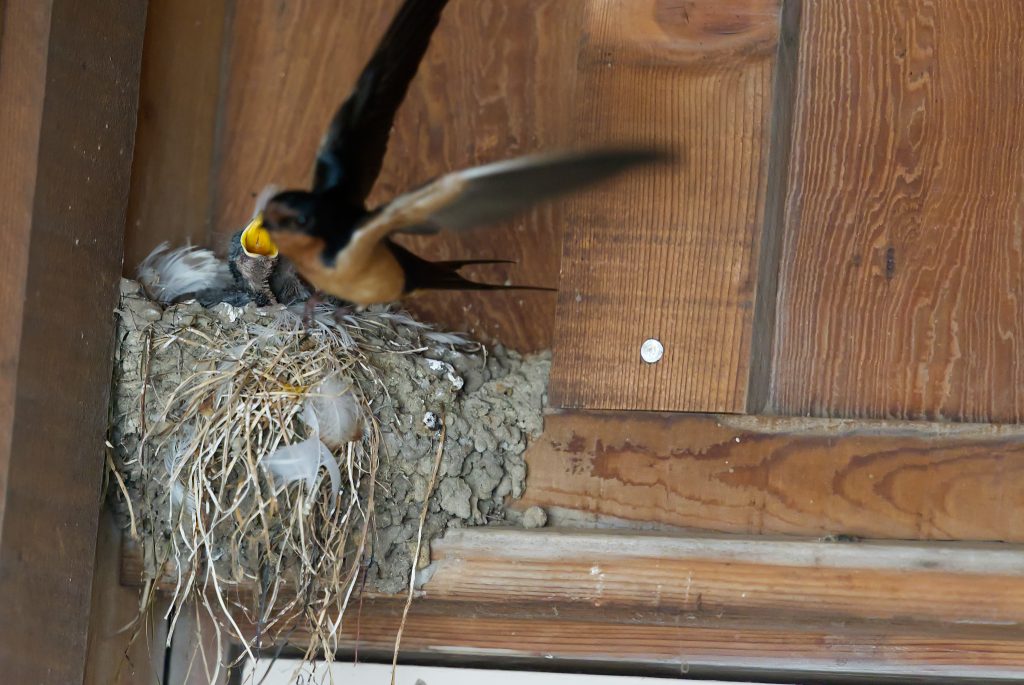
2020-06-27
© Allison J. Gong
. . . leaving the babies alone in the nest again.
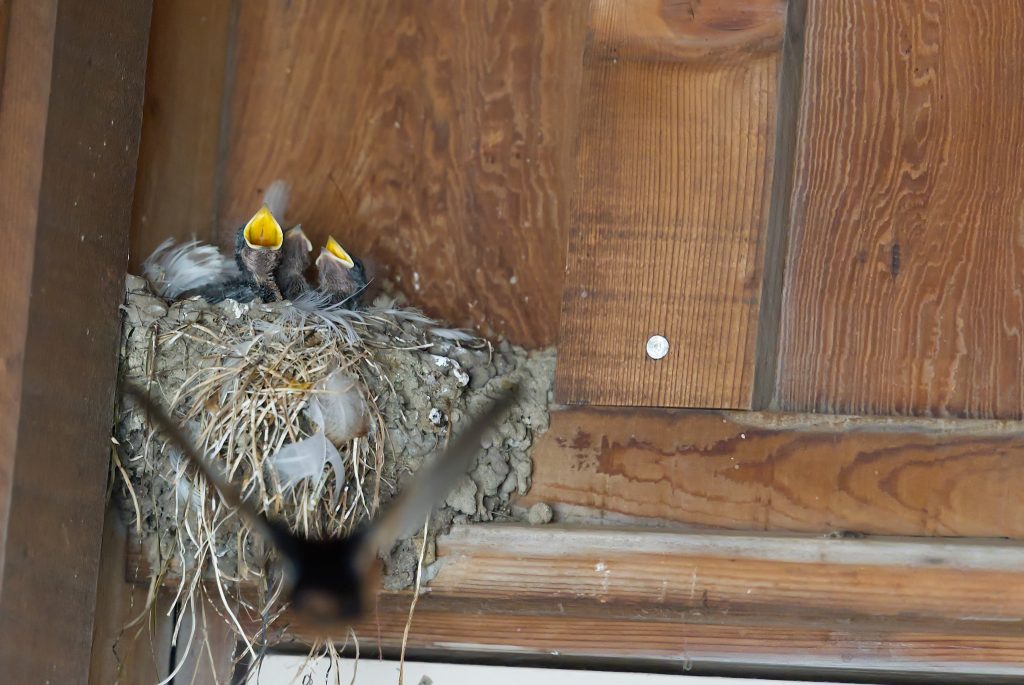
2020-06-27
© Allison J. Gong

© Allison J. Gong
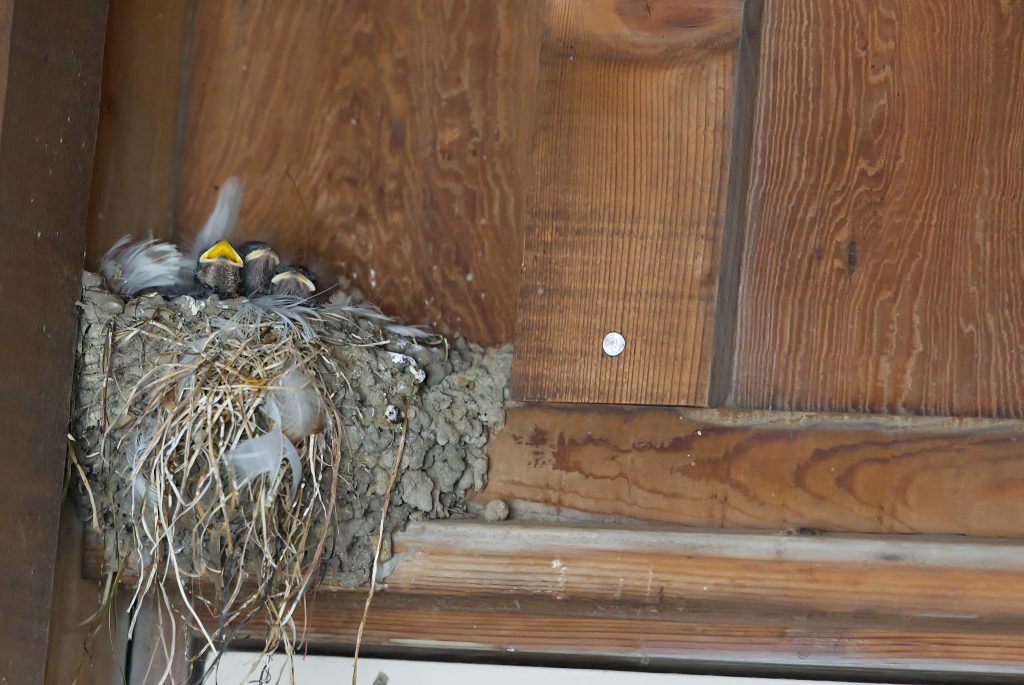
© Allison J. Gong

© Allison J. Gong
These babies still need to grow feathers, although they are clearly big enough to thermoregulate without a parent sitting on them. Growing feathers takes a lot of metabolic energy, and aside from when the parents arrive with food the nestlings will sleep. But it’s funny. They seem able to keep an eye (or maybe an ear) out for the parents flying around, and whenever one flies past the doorway they all perk up and start cheeping. There are lots of swallows at the marine lab right now, and I wonder if these babies can identify their parents from among all the other adults in flight.
They’ll grow fast, being fed frequently by their parents. They’ll have to get big and strong, to prepare for their migratory trip south in the fall I’ve never noticed exactly when they leave, I think because by the time they head south they’ve dispersed from the nest site. I always look forward to their return in the spring, though.
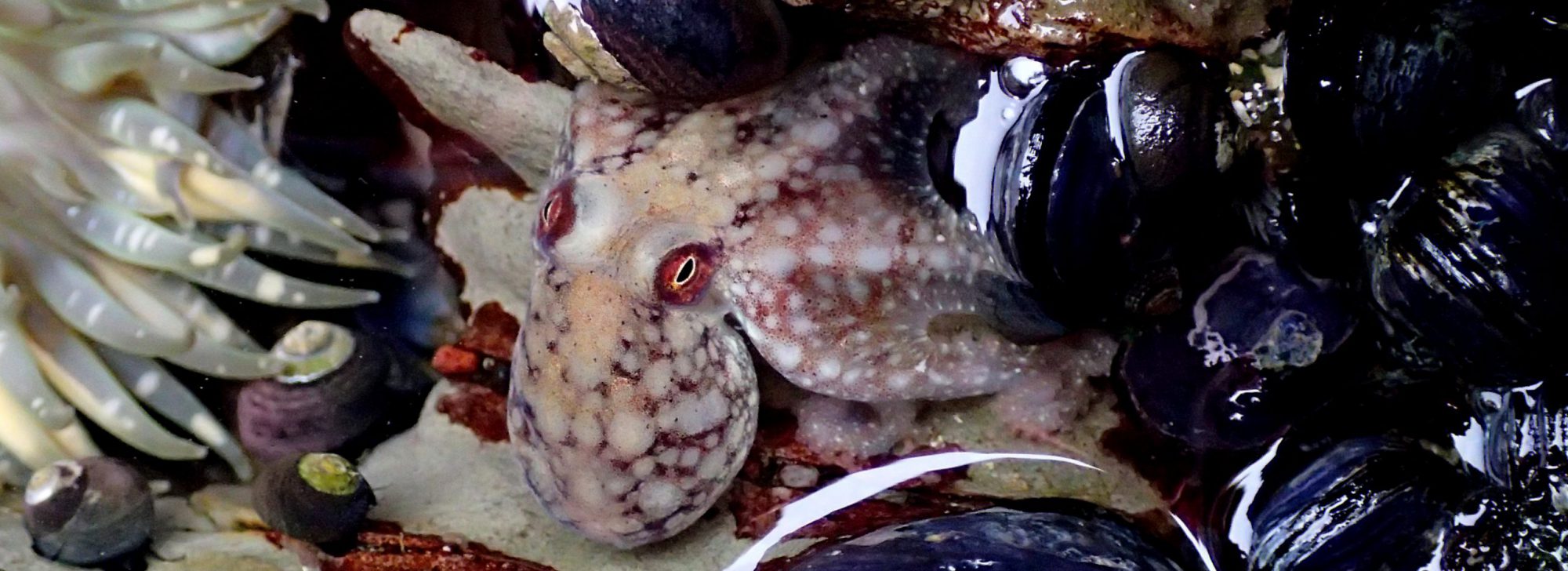
The baby chicks are SO CUTE!
I know! They sleep sleep sleep until the parents come near, and then they open up those huge yellow mouths. Then it’s immediately back to sleep sleep sleep again.